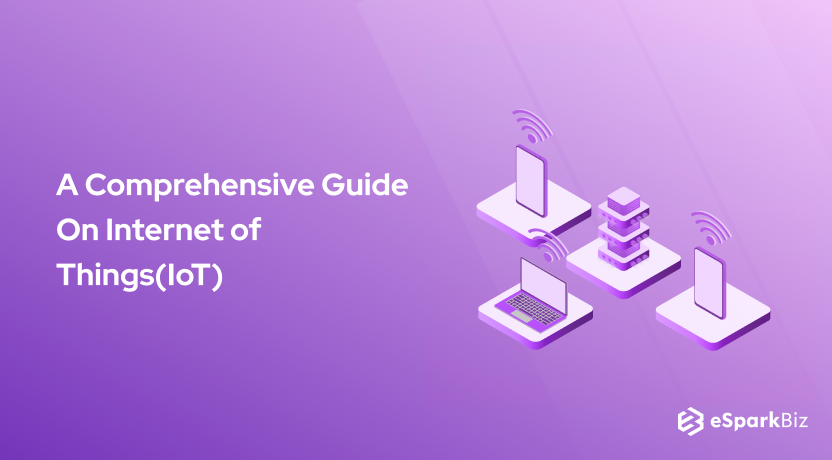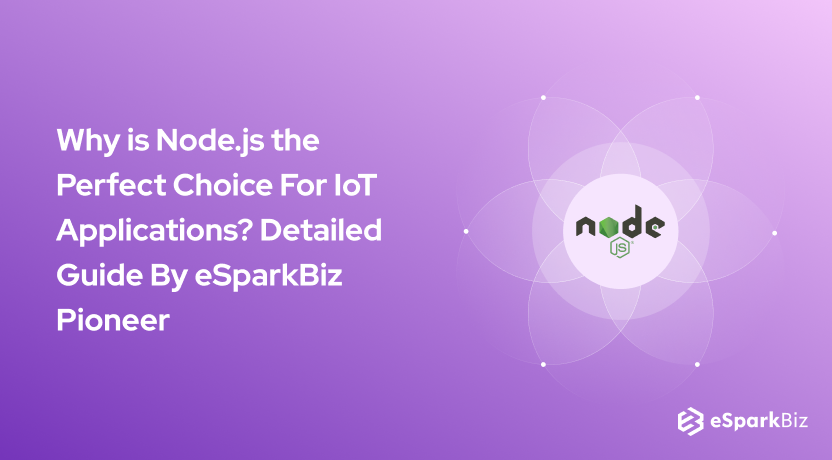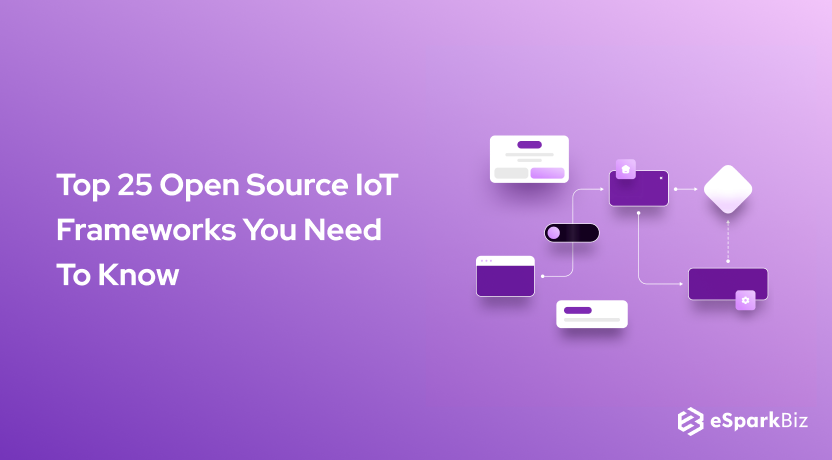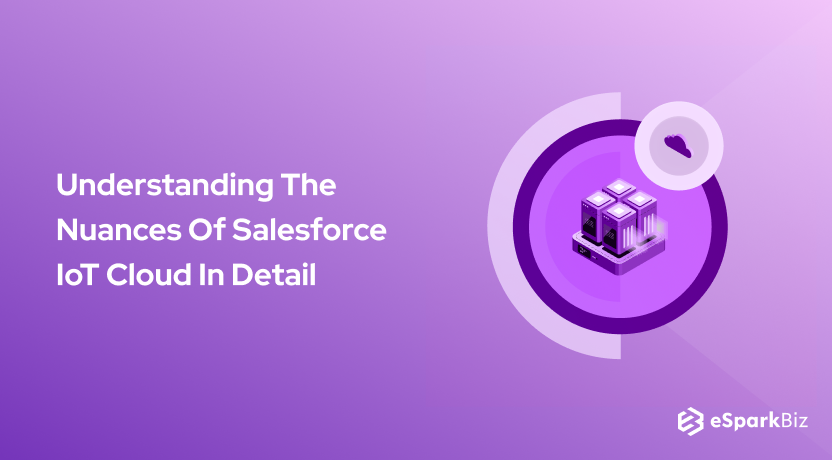At a time where we are advancing in the tech arena at a compounding rate, the most common question that people weave inside their mind is – “what is IoT and how it works?”
To put it in layman’s terms, it is a one-stop solution for a connected living with electronic devices and appliances that can make use of the internet. From alerting you about the low petrol volume in your car tank to suggesting you the nearest petrol pump, IoT helps you in every aspect.
Its applications are now way unlimited on the face of this planet. IoT has a far reaching impact not only with regards to making people’s lives easy but also saving the planet.
So, without wasting any more time, let’s delve into the topic.
IoT(Internet of things) in simple words?
Well, it is a concept that defines the network of devices, or colloquially speaking, ‘connected things’. The ideology of linking any device to the web as well as other linked tools is touted to be Internet of Things.
The sole objective of this system is to accumulate data and share them in a manner in which they are utilized to make lives simpler.
Whether it is self-driven vehicles with advanced sensors to identify the objects in the road, fitness bands that help in measuring your heart rate and daily footsteps, or smart microwaves that cook food automatically for the right duration – all these things are the positive outcome of IoT.
Few Statistics about IoT
As you are introduced to the fundamentals of the Internet of Things, let’s check out some interesting statistics on this concept to know about how well it has progressed so far. This will also give you an idea of what to expect from this ecosystem in the years to come.
- 100% of the people are forecasted to have the coverage of LPWAN by 2023
- It was earlier forecasted that the worldwide IoT market will witness a profit of around $1.7T by 2019
- Around 50% of the IoT tools were linked to WPAN, such as Bluetooth, Z-wave and Zigbee in 2018
- There were approximately 7B IoT tools in 2018. Nevertheless, around over 10B tools could join the ecosystem of IoT.
Benefits of IoT

Proper inclusion of the Internet of Things in your infrastructure can help you attain a wide array of advantages. Some of the prominent ones are:
- IoT can help you to automate your organization’s asset tracking system and report you about your inventory through the ERP system. It consequently makes your inventory management modules easier to handle and cost-effective too.
- With iot app development services, you can relish new opportunities to expand your business by using superior analytics to unearth crucial business insights. It minimizes the operational expenses and enables you to access business-related data from different networks.
- This ecosystem also facilitates you to enhance your consumer dialogue by offering you the scope of improving the levels of interaction and conversations with your customer.
- IoT permits you to manufacture as well as roll out new services and products swiftly. The IoT devices assist in predicting the needs and the requirements of the consumers to further speed up the planning and distribution of new profit-generating offerings.
- By incorporating the IoT system in your organization, you will be able to increase the security and safety within the workplace. The system can sense if there is any gas leakage or pressure loss inside any piping section, and inform the officials through a notification on their smartphone.
- Most importantly, IoT has the capability to enhance and improve controls over the operational methods.
Various Components of IoT
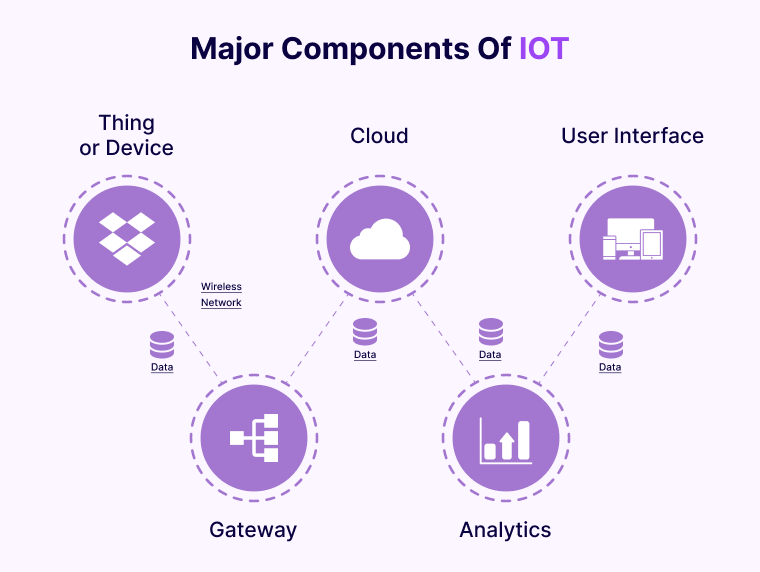
To get the Internet of Things explained , you need to comprehend the four different mechanisms that altogether form the comprehensive IoT ecosystem. They include sensors/devices, connectivity, data processing, and a user interface.
To make it clearer for you, we have mentioned a detailed analysis of these components.
Sensors/Device
Speaking of the sensors or devices, this mechanism gathers information from the surroundings. For instance, the whole process could be as easy as a temperature reading or as challenging as video streaming.
In this setup, the sensor has the ability to share data to a decision-engine which encompasses in-built rules to take on the action.
In the case of this particular component, several sensors can be accumulated together. On the other hand, it can also act as an integral portion of any tool or equipment that does a lot of things other than sense. You might take your smartphone as an example, which has several sensors, including GPS, camera, etc. but it itself is not a sensor.
Connectivity
After the data is collected, the IoT ecosystem selectively shares it to the cloud-based infrastructure. The data sharing procedure takes place in some specific ways.
These methods of connectivity between the cloud-storage and sensors include WiFi, cellular, Bluetooth, satellite, LPWAN, etc. However, at times, it is also connected to the web directly with the assistance of ethernet.
All the individual options have their own way of data exchange amid the bandwidth, power consumption and range. Now, you will have to choose the connectivity option that will be suitable for your IoT application.
However, at the end, all the different choices will perform a similar thing – the job of transferring data to your system’s cloud storage.
Data Processing
The moment the data reaches the cloud-based storage, the whole ecosystem commences with the processing of the attained specifics. It could be sometimes really straightforward, like examining the temperature reading on tools like heaters or AC under an adequate range. On the other hand, it can sometimes be way more complex, like detecting objects through computer vision.
But, sometimes crucial information derived through data assessment may signal towards the need of human intervention. For instance, suppose, the temperature is extremely high or an intruder steps into your home. That is where the needs of the user comes up.
User Interface
Post the data processing phase, the important actionable insights gathered can be provided to the end-user through an app with a neat UI, so that users can navigate to the desired path easily. For instance, you might receive a text notification on your phone when the temperature is supremely high in an organization’s cold storage.
More so, the person responsible for handling the IoT system might possess an interface that enables him/her to evaluate the arrangement proactively. For instance, there might be a camera installed in the user’s house. He/she could desire to check out the video footage using a web browser or phone application.
Moreover, instead of informing you about the presence of an imposter at your place, this ecosystem could alert the authorized bodies directly.
How the Internet of Things Works?
By now, you probably know the superpowers of IoT! But, how does the Internet of Things work and manage everything on its own could be a lingering question? Expectedly, many of you are thinking the same right now. To clear all your qualms, we will explain its functioning in the easiest way at this section.
The objects as well as the devices that possess in-built sensors are linked to a specific platform of IoT. The ecosystem incorporates vital information from distinct tools and also applies analytics for sharing valuable data with apps that are designed to address precise needs.
Further, the platforms have the power of pinpointing which data can be helpful and which can be averted securely. The sorted information aids in analyzing the outlines, making the commendations, and identifying the potential issues.
Speaking of an instance, if you run a car manufacturing trade, you might wish to identify which of the elective components are currently in the hype. You can do that conveniently by availing the IoT system.
With this platform, you will be able to detect:
- Which corners in the car showroom are crowded with customers the most
- The fastest-selling components through an assessment of the accessible sales data
- Ensure the vast availability of the popular items by aligning the sales data automatically
The insights that the advanced analytics offer help in making the day-to-day tasks a lot more proficient. With the assistance of smart IoT systems and objects, you can automate the repetitive and time-consuming tasks.
Therefore, the system allows you to make good decisions, relying on the real-time data. In turn, it saves your time, effort, money and the greatest among all, generates greater revenue to your business.
What IoT Means to the Business World?
Now that you lucidly know the functionality of the Internet of Things, let’s discuss its massive contribution in the world of business. This progressive platform is transforming various sectors including healthcare, retail, education, and economy.
Let’s look at some examples for a clearer view.
Healthcare
Healthcare Industry is one of those segments that evidently shows how IoT works for the welfare of human beings. The implementation of this ecosystem in the medical field has facilitated both the patients and health practitioners.
With this technology, the specialists acquire real-time access to the medical data of the patients. It also enables them to store all the crucial details associated with the patient’s treatment procedure on the cloud or share them with others.
As a result, the patients do not need to wait long to get precise health services. Additionally, it also helps the officials of any healthcare centre to confirm the convenience of medical tools. To top them off, IoT makes it easier to detect chronic ailments and provide apt treatment that can reduce the risk factors.
Education
Alongside healthcare Industry, IoT technology has even brought some revolutionary modifications to the educational area. It helps in connecting people that simplifies the methods of sharing information on various topics.
Besides, it even mitigates the threats that obstruct the education system from making progress. With it, this particular sector has become much more secure and accessible.
Retail
With the IoT ecosystem, the retail industry is flourishing immensely. The incorporation of the technology has made it far more convenient for the owners to provide a customized user experience to their consumers. Moreover, it not only maintains the retail-bases commodities but also systematizes the checkout procedures.
Sharing Economy
Today, the Sharing Economy is expanding at an impressive rate with the amalgamation of Blockchain and IoT technology. This IT duo is assisting in designing an online square where the information from different stores and companies can be stockpiled securely.
In fact, when needed, those data can be shared efficiently, while maintaining proper transparency. However, to bring that on the action, one needs to make use of the concept of smart contracts.
Real Estate
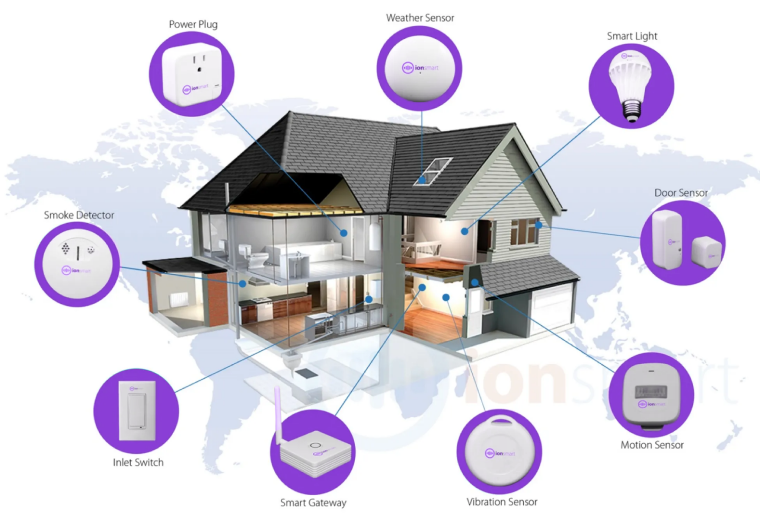
Even the real estate business is relishing a massive growth with the inclusion of the innovative Internet of Things technology. The industry depends on raw materials, like concrete, steel, cement, etc. With the help of IoT, one can efficiently assess the stock and availability of these assets.
Moreover, the system is also able to evaluate the risks and perils related to the operational deterioration, which the real estate business generally encounters.
Also, it can collect information associated with the threats, like the technical breakdown of HVAC, the existence of toxic gases, etc. Apart from all these, it boosts the process of decision-making and provides energy-efficient choices.
Travel
The IoT ecosystem allows travel agencies to provide real-time data. Moreover, with this, the users can relish the opportunity of automating almost all the procedures of the travelling industry.
One of the popular examples of IoT here is sharing the automated key cards on the smartphone of the guests to ensure convenience and security of the provided services.
Realtime Example of IoT

Besides having an answer to “how does the internet of things works”, you ought to learn about some of its real-time instances. In this context, it is important to mention that the technology is well-suited in all the below-enlisted realms.
IoT at Home
Suppose you usually get up sharp at 7 am to head to your office and your regular alarm clock takes on the task of waking you up. That is totally fine until a situation occurs when your daily mode of transport is stalled, and so you need to drive. But in order to reach on time while self-driving, you have to wake up 15 mins in advance.
IoT can evade this situation completely. A connected home, with a smart alarm can run on various attributes. It can even report any delays in public transports (buses, trains), riots, road blocks, heavy traffic, etc., and can set the alarm accordingly.
This way you are never late!
IoT in Transport

The future of IoT in transport is bright. Cars come with intelligent infotainment systems that can analyze traffic conditions to modify routes. In fact, there would come days when cars could be connected to traffic signals for a smooth flow at major junctions.
Moreover, modern-day cars have a specific component, namely a diagnostic bus that gathers information from the sensors and sends it to the manufacturer’s side. Subsequently, the manufacturer could send you the address of the nearest service centre to get your car repaired smoothly.
Proximity Marketing
Today, almost all consumers want to know the outcome of a specific product before investing money on it. So, they want to touch and feel the product in advance, yet also prefer the facility of digital convenience. The Internet of Things has turned the proximity of marketing into reality.
Subsequently, when a consumer shares a close relationship with a specific store, the sensors of the technology are able to share the user data to the framework of hyper decision.
It further will examine the shopping pattern and requirements of the shoppers. Then it shares the accurate message to the precise location at the correct time and obviously to the right individual.
Asset Tracking

The assets usually differ from one industry to another. It could comprise tools, inventory, gigs, or fixtures, etc. In the case of the healthcare segment, the assets could be several moveable assessing tools such as Ultrasound machine, ECG machine, stretchers, wheelchairs, transportable X-Ray machine, etc.
In order to evaluate the life expectancy of these assets, they require tracking. Not only does IoT assist in determining their resilience but also helps to detect their location as well as their executing yearly audit.
Employee Monitoring
Employee monitoring inside the campus of any association is extremely crucial. Besides enhancing the productivity and efficiency of the organization, it boosts the morals and security concerns as well. In order to accomplish the task, the implementation of the Internet of Things is necessitated.
For that, the employees have to wear BLE IoT sensors-based ID Cards. The sensors present in the card makes the inspection procedure way easier. For example, to identify your credential, the security module of your organization will only have to check your ID card for once.
Security Patrol Guard Management

The security guards indulge themselves in a challenging situation when any threat or anomaly emerges. Since they do not possess any device to communicate with the team members, they could hardly seek assistance. Thus, in major cases, the patrol guard has to drop his armament or put his/her life at risk.
However, if the security guard puts on the BLE ID Card along with his/her uniform, he/she can easily call the team for help just by pressing on the distress button present on the card. When the personnel does so, the SoS signal reaches the cloud server of IoT immediately. As a result, the hyper decision helps in fetching the nearest aid available as soon as possible.
Conclusion
So, as you can see the opportunities regarding the IoT solution are, in essence, immeasurable. Therefore, if you know how IoT works and can implement it appropriately on your organizational infrastructure, it can help you to earn an edge over the competitors, big time.

